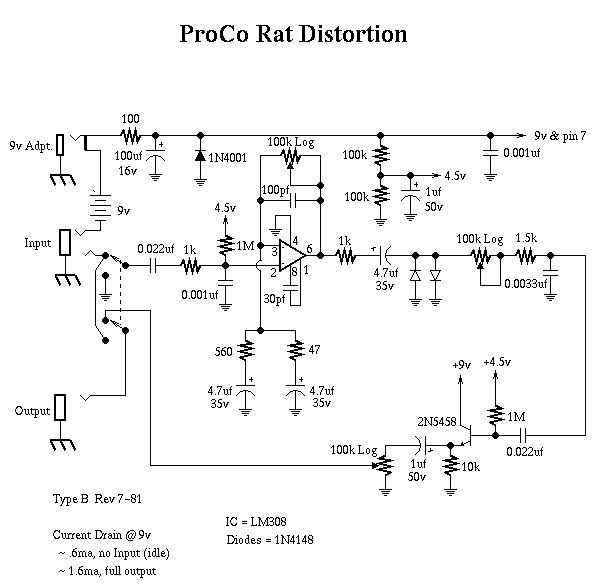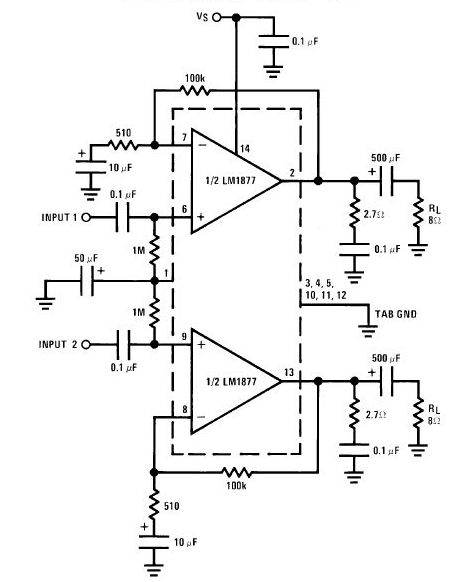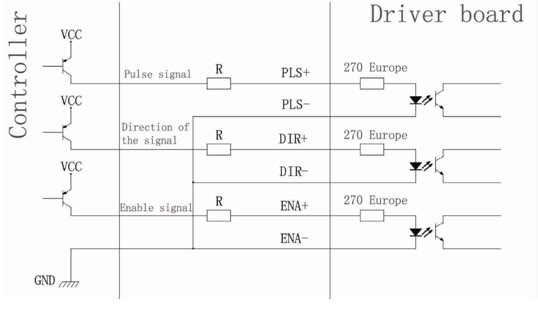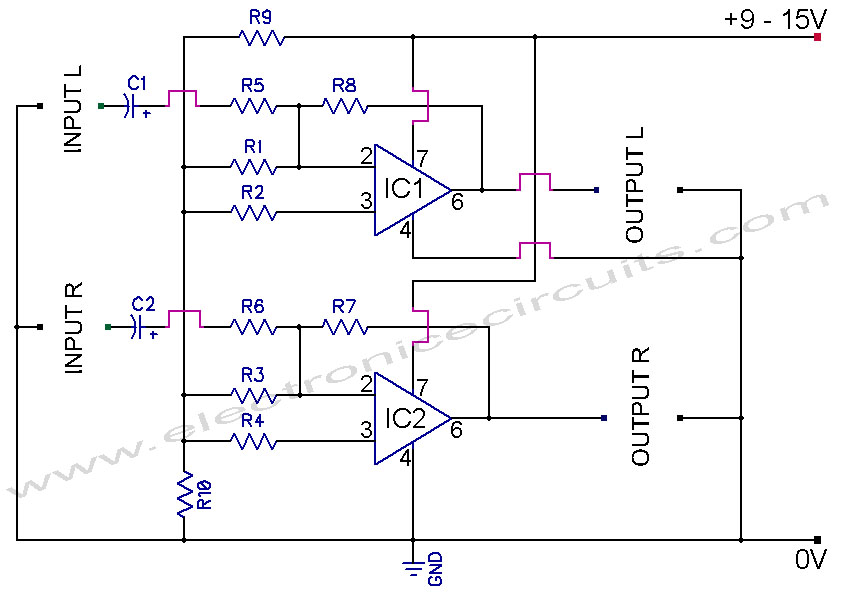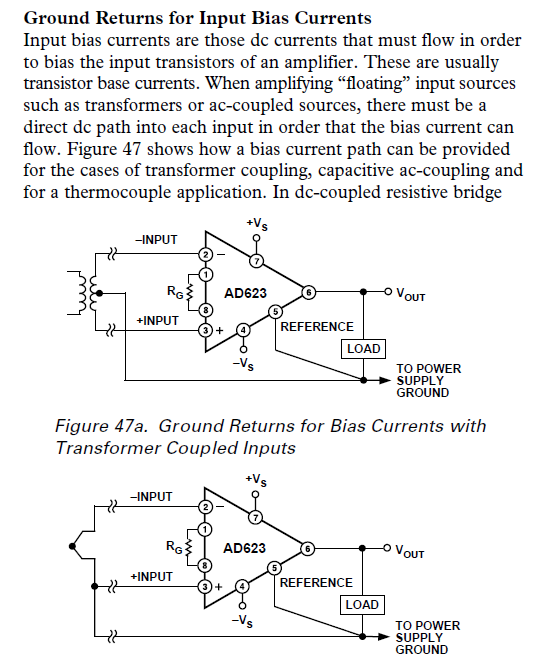
A Balanced Output Board For The Stereo DAC
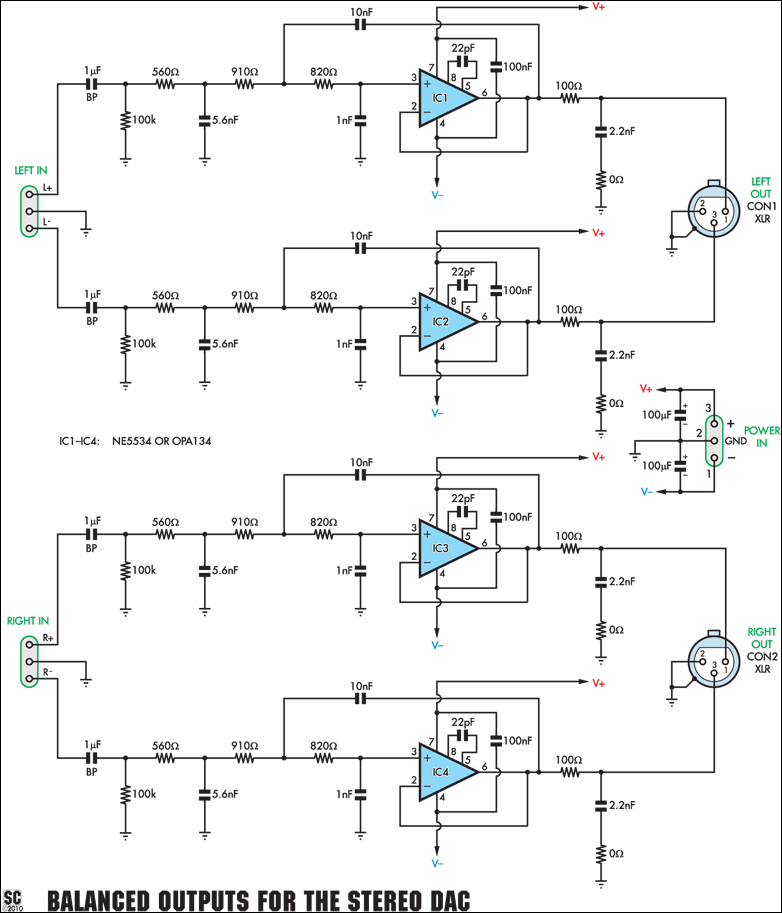
This add-on board is designed to provide a pair of balanced audio outputs for the High-Quality Stereo DAC (Digital to Analog Converter). Two 3-pin male XLR connectors are used for the new outputs, which can either replace or augment the existing unbalanced outputs without affecting their performance. Balanced audio is utilized in recording studios and on stage due to its enhanced noise immunity. This improvement arises from the differential transmission of the signal (i.e., as two signals 180° out of phase), which is then converted to a single-ended voltage signal at the receiving end. Any noise introduced in the cable impacts both out-of-phase signals equally, allowing for effective cancellation of the noise when the signals are subtracted. Furthermore, the DAC's performance at the balanced outputs typically surpasses that of the unbalanced outputs, albeit by a minor margin. The signal-to-noise ratio, frequency response, and channel separation are all superior, despite a slight increase in distortion from the balanced outputs. Nevertheless, both distortion levels remain sufficiently low to be considered negligible.
The add-on board's design integrates seamlessly with the High-Quality Stereo DAC, enabling enhanced audio performance through the implementation of balanced outputs. The choice of two 3-pin male XLR connectors is critical, as XLR connectors are widely recognized for their robust construction and ability to maintain signal integrity over longer cable runs, making them ideal for professional audio applications.
Balanced audio transmission is particularly advantageous in environments where electromagnetic interference (EMI) is prevalent. By sending the audio signal as two complementary signals, the system effectively mitigates the impact of external noise. This is achieved through the differential signaling method, where the DAC generates two identical audio signals that are inverted in phase. At the receiving end, the audio equipment processes these signals, subtracting one from the other to isolate the desired audio while cancelling out common noise.
The specifications of the balanced outputs are designed to meet the rigorous demands of professional audio environments. The signal-to-noise ratio, a critical parameter in audio fidelity, is optimized to ensure clear and dynamic sound reproduction. Additionally, the frequency response is engineered to handle a wide range of audio frequencies, making the system suitable for various applications, from studio recordings to live sound reinforcement.
Channel separation is another important aspect, as it enhances the stereo imaging and spatial characteristics of the audio. The balanced outputs provide improved channel separation compared to unbalanced outputs, allowing for a more accurate representation of the audio source. This is particularly beneficial in multi-channel audio setups where clarity and precision are paramount.
While the balanced outputs may exhibit slightly higher distortion levels compared to their unbalanced counterparts, the difference is minimal and does not detract from the overall audio quality. The design philosophy behind this add-on board prioritizes performance and reliability, making it a valuable enhancement for users seeking to elevate their audio experience.This add-on board is designed to provide a pair of balanced audio outputs for the High-Quality Stereo DAC (Digital to Analog Converter). Two 3-pin male XLR connectors are used for the new outputs and they can either replace or augment the existing unbalanced outputs without affecting their performance.
Balanced audio is used in recording studios a nd on stage because of its improved noise immunity. This is due to the fact that the signal is sent differentially (ie, as two signals 180 ° out of phase) and then converted to a single-ended voltage signal at the far end. If any noise is picked up in the cable, it affects the two out-of-phase signals equally so that when the signals are subsequently subtracted, most of the noise is eliminated.
In addition, the DAC`s performance at the balanced outputs generally exceeds that of the unbalanced outputs, although only by a small margin. The signal-to-noise ratio, frequency response and channel separation are all better, although we measured a tiny bit more distortion from the balanced outputs.
However, both levels are so low as to be almost negligible. 🔗 External reference
The add-on board's design integrates seamlessly with the High-Quality Stereo DAC, enabling enhanced audio performance through the implementation of balanced outputs. The choice of two 3-pin male XLR connectors is critical, as XLR connectors are widely recognized for their robust construction and ability to maintain signal integrity over longer cable runs, making them ideal for professional audio applications.
Balanced audio transmission is particularly advantageous in environments where electromagnetic interference (EMI) is prevalent. By sending the audio signal as two complementary signals, the system effectively mitigates the impact of external noise. This is achieved through the differential signaling method, where the DAC generates two identical audio signals that are inverted in phase. At the receiving end, the audio equipment processes these signals, subtracting one from the other to isolate the desired audio while cancelling out common noise.
The specifications of the balanced outputs are designed to meet the rigorous demands of professional audio environments. The signal-to-noise ratio, a critical parameter in audio fidelity, is optimized to ensure clear and dynamic sound reproduction. Additionally, the frequency response is engineered to handle a wide range of audio frequencies, making the system suitable for various applications, from studio recordings to live sound reinforcement.
Channel separation is another important aspect, as it enhances the stereo imaging and spatial characteristics of the audio. The balanced outputs provide improved channel separation compared to unbalanced outputs, allowing for a more accurate representation of the audio source. This is particularly beneficial in multi-channel audio setups where clarity and precision are paramount.
While the balanced outputs may exhibit slightly higher distortion levels compared to their unbalanced counterparts, the difference is minimal and does not detract from the overall audio quality. The design philosophy behind this add-on board prioritizes performance and reliability, making it a valuable enhancement for users seeking to elevate their audio experience.This add-on board is designed to provide a pair of balanced audio outputs for the High-Quality Stereo DAC (Digital to Analog Converter). Two 3-pin male XLR connectors are used for the new outputs and they can either replace or augment the existing unbalanced outputs without affecting their performance.
Balanced audio is used in recording studios a nd on stage because of its improved noise immunity. This is due to the fact that the signal is sent differentially (ie, as two signals 180 ° out of phase) and then converted to a single-ended voltage signal at the far end. If any noise is picked up in the cable, it affects the two out-of-phase signals equally so that when the signals are subsequently subtracted, most of the noise is eliminated.
In addition, the DAC`s performance at the balanced outputs generally exceeds that of the unbalanced outputs, although only by a small margin. The signal-to-noise ratio, frequency response and channel separation are all better, although we measured a tiny bit more distortion from the balanced outputs.
However, both levels are so low as to be almost negligible. 🔗 External reference
